NATIONAL MUSEUM OF AMERICAN HISTORY
8 Things You Didn’t Know About the Star Spangled Banner
There is more to the story of this flag than meets the eye
:focal(275x175:276x176)/https://tf-cmsv2-smithsonianmag-media.s3.amazonaws.com/blogging/featured/Star_Spangled_Banner.png)
The Star-Spangled Banner is one of the most recognizable icons of the United States. Huge, vibrant, and rich in history, most Americans are familiar with the story of this particular flag. It's the one that inspired Francis Scott Key to write the words that would one day become our national anthem as it flew over Baltimore's Fort McHenry during the War of 1812. Although this flag has been around for over 200 years, there is more to the story than most people know.
1. The Star-Spangled Banner has a sibling, and we have no idea where it is.
In 1813, Mary Pickersgill, a Baltimore flagmaker, was commissioned to make two flags for Fort McHenry. In addition to the gigantic 42 x 30 foot garrison flag (now known as the Star-Spangled Banner), Pickersgill and the young women who helped her also sewed a smaller "storm flag." At 17 x 25 feet, this storm flag was much smaller and was designed to withstand tough weather, such as the raging winds and pouring rain that occurred during the Battle of Baltimore.
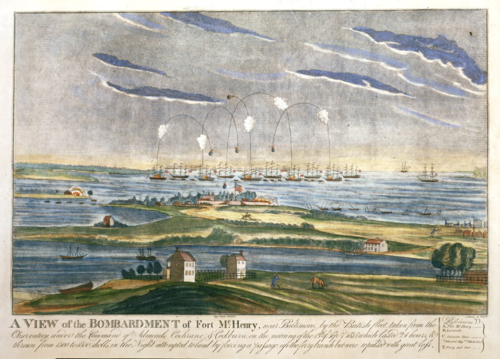
Two eyewitnesses—a British midshipman out in the harbor and an American private inside the fort—recounted seeing a flag being raised above the fort in the morning, so the logical conclusion is that the garrison flag seen that morning was not flying during the battle itself. However, scholars continue to debate whether the storm flag flew during 25-hour bombardment. In February 1815, the storm flag was lost to history after being replaced by a new one from the Schuylkill Arsenal in Philadelphia.
2. There were more than 15 states when the flag was made, but there are only 15 stars on the flag.
No, Mary Pickersgill did not make a mathematical error. The flag's design was last approved by Congress in 1794, providing for 15 stripes and 15 stars. This was not updated until April 4, 1818, so Pickersgill sewed on 15 stars.
Each star, by the way, is made of cotton and was created by reverse applicqué method. Each star was stitched into place on one side of the flag and the cloth on the reverse side was then cut away to reveal it.
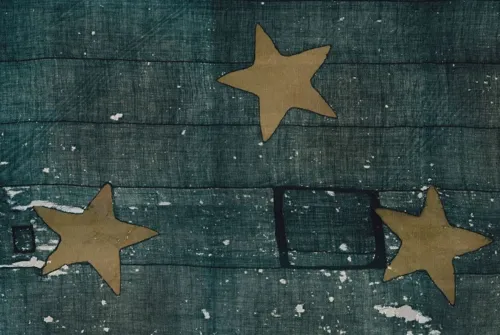
3. The family that kept the Star-Spangled Banner safe during the Civil War sympathized with the Confederacy.
After the death of Col. George Armistead, who was commander of Fort McHenry during the Battle of Baltimore, the flag passed to his daughter Georgiana Armistead Appleton. Georgiana found herself on the wrong side of the battle lines when the Civil War broke out. Although she lived in Maryland, a Union state, her sympathies lay with the Confederate cause. Her son George was even arrested in 1861 for trying to sneak into Virginia to join the Confederate Army.
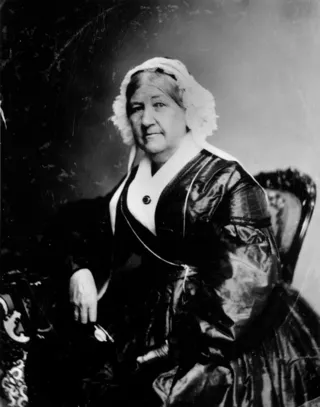
Despite their feelings about disunion, the Armistead family made a specific effort to protect the flag that symbolized a preserved and united nation. It is likely that they kept the flag hidden in their home in Baltimore for the duration of the war, but Margaret Appleton Baker, Georgiana's daughter, told the New York Herald in 1895 that the flag had actually been sent to England. As internationally intriguing as her story is, there is no evidence to support Margaret's recollections and historians agree the flag probably remained in Baltimore.
4. After coming to the Smithsonian, the Star-Spangled Banner has only left the National Mall once.
Only twice in its history has the Star-Spangled Banner been hidden away to keep it safe from war, though America has fought many more wars than that since 1814. After the attack on Pearl Harbor, Americans once more felt their homeland might be under real physical threat. As World War II began, plans were made to protect a number of the Smithsonian's most precious objects. The flag and many other treasures were crated up and sent to Luray, Virginia, for safekeeping.
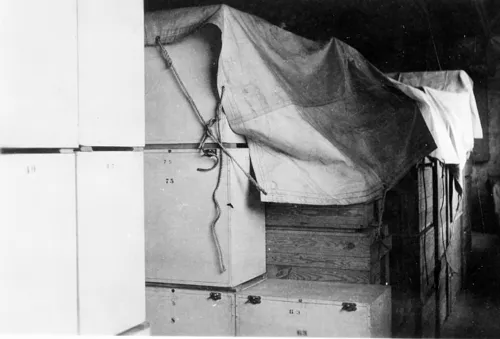
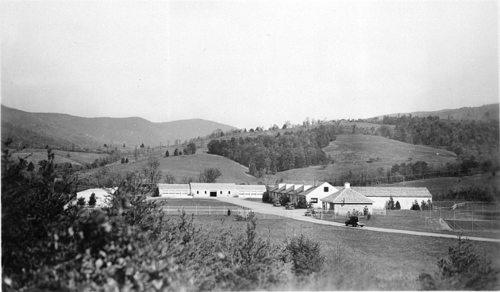
5. The Star-Spangled Banner flag is on display at the National Museum of American History. And it's never leaving.
Museums often lend objects and artifacts to each other in order to tell more complete stories. In the case of the Star-Spangled Banner, however, that will likely never happen. In 1912, Georgiana Armistead Appleton's son Eben Appleton decided to give the Star-Spangled Banner to the Smithsonian as a permanent gift. In 1913, the National Star-Spangled Banner Centennial Commission in Baltimore asked to borrow the flag for their celebration. Eben immediately wrote to the Secretary of the Smithsonian, Charles D. Walcott. "I gave the flag to the National Museum with the firm and settled intention of having it remain there forever," he wrote, "and regarded the acceptance of the gift by the Authorities of the Museum as evidence of their willingness to comply with this condition..."
Eben asked Walcott to ensure that any "citizen who visits the museum with the expectation of seeing the flag be sure of finding it in its accustomed place."
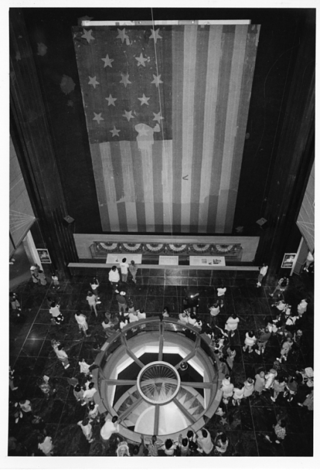
6. The museum removed 1.7 million stitches from a previous preservation attempt from the Star-Spangled Banner.
The short video below introduces a method used by Amelia Fowler, who was hired in 1914 to help preserve the flag. Undoing her work required unbelievable precision.
7. During the Civil War, the Union flag continued to include a star for each state in the Union—even those states that had seceded.
Although states seceded from the Union and joined the Confederate States of America, the U.S. flag remained unchanged. President Abraham Lincoln maintained that those states never really left the nation but were merely in rebellion. Keeping their stars on the national flag signified that continued solidarity. In fact, the number of stars on the flag actually grew during the war from 34 to 36. West Virginia and Nevada joined the Union in 1863 and 1864 respectively.
The Confederate States of America chose a pattern for their national flag that is strikingly similar to the Star-Spangled Banner, the flag of the Union.
When Confederate soldiers carried their national flag into battle, its stars and stripes led to confusion—especially when the smoke and wind of battle wrapped the flag around its staff. The Confederate Army eventually adopted the Confederate battle flag in order to avoid potentially lethal confusion.
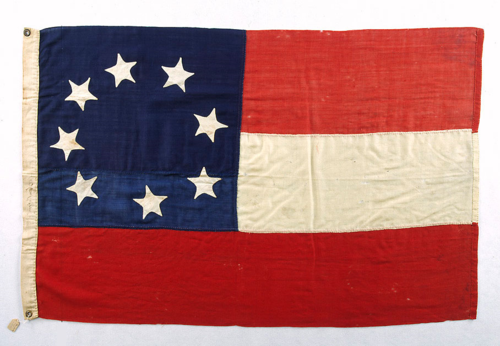
8. The Star-Spangled Banner flag does not have burn marks on it.
When markings on the flag were investigated and analyzed, they were found to be from iron corrosion. This could have resulted from metal buckles or straps or tacks on belts used to hold the flag. They appeared over time as the iron particles corroded.
This post was originally published on the National Museum of American History's blog on June 2, 2014. Read the original version here.


